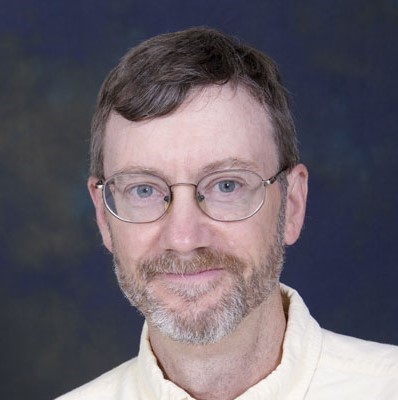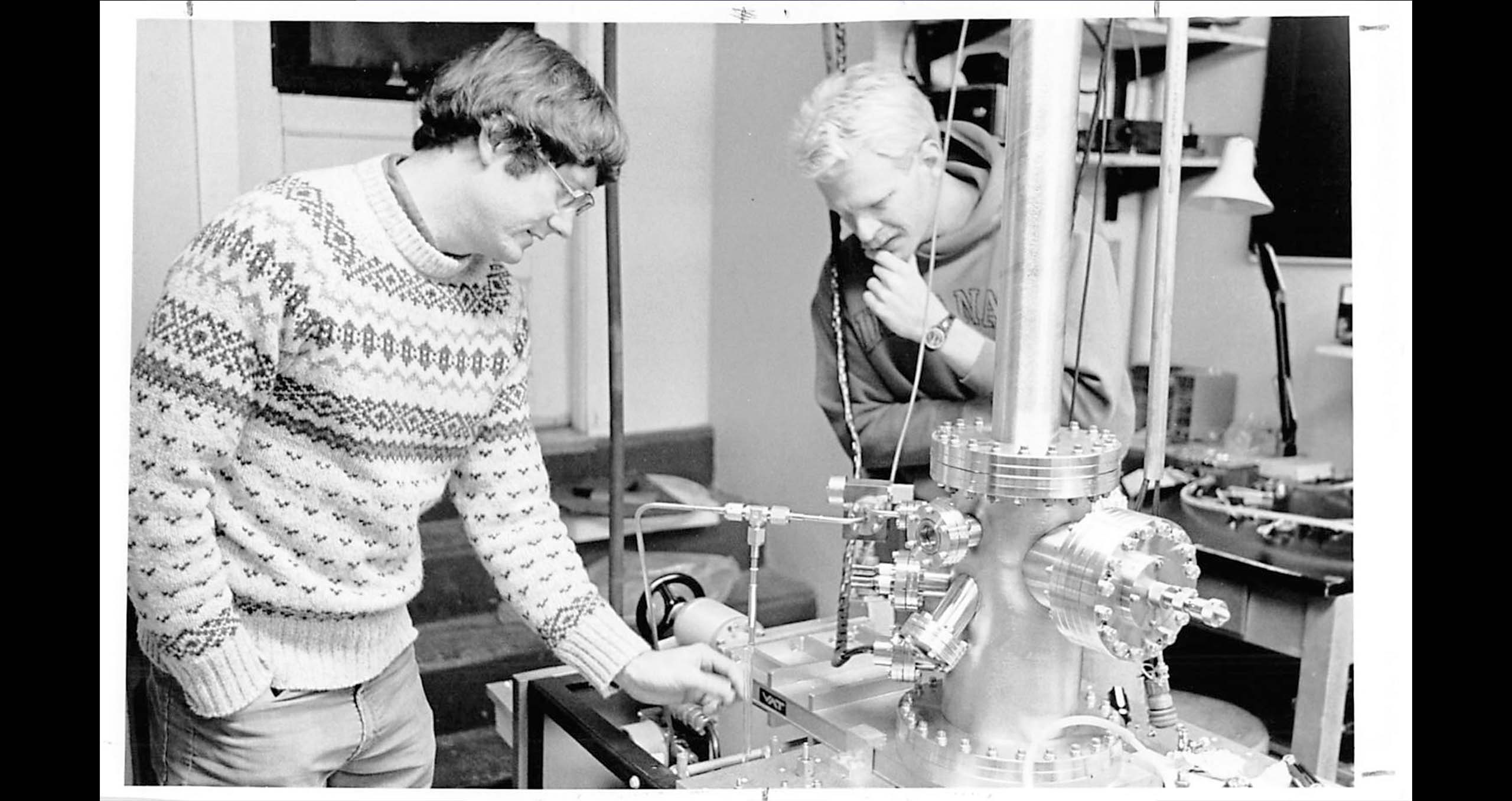Jim was a gifted physical chemist and teacher. He put significant energy and time into general chemistry, undergraduate physical chemistry, and the many graduate classes he led. He won awards for his undergraduate teaching both early and late in his career, indicating a true dedication to art of patient instruction. A colleague of mine, Chris Houston (Ph.D. 1999), had this recollection of Jim’s teaching.
“I admired his ability to cut through noise and focus on what was most important. My favorite example of this occurred during my first year when Jim guest taught our electronics course. Our regular electronics professor had given a pair of confusing lectures on transistors that baffled a significant portion of the class. Jim opened his lecture with, “By now, you all know that a transistor is basically a switch.” In one sentence he managed to bring two lectures worth of material into perfect clarity. There was an undercurrent of “oh!” that swept through the class accompanied by nearly visible illumination of metaphorical lightbulbs over everyone’s head. It was a breathtaking moment and pointed directly to a talent that earned him accolades for teaching.”

As a scientist, he always strove to deeply the fundamental processes at work in the fields he studied, and Jim was a truly gifted experimentalist. His research arc shows constant renewal, his insatiable curiosity, as well as a willingness to work with his students on projects they found fascinating. He was my graduate advisor from 1996-2004. Jim was a patient, dedicated, and humble mentor. He was more interested in helping his students succeed than in his own self-aggrandizement. He could foster the excellence found in the gifted students all scientists dream of having in their groups as well as find the path to more modest success for those who required more patient instruction. I was in the latter category and Jim never raised his voice with me nor made me feel worthless. He led by example with grace, never fear or brow beating. Jim was always generous with co-authorship and in collaboration.
I often compared graduate school to a forging process where the raw talent, dedication, and willingness to learn found in a student are formed into a useful implement through work, exploration, and the simple act of doing science. Jim was a master in this art. He recognized that all students had value. He saw what a student could become and helped the student reach that potential through gentle admonishment and shared exploration. The metal does not necessarily enjoy the forge, but it is better for the time spent under the master’s skilled hands. My time in the group led me to uncover the drive necessary to see projects to completion and gain the confidence in my own skills to succeed in my next endeavor right from the start. Jim also was quick with respect when it was earned. As soon I finished in his group and became the mass spectrometry facility manger, I was a peer and a colleague. He valued my time and gave me space to grow and respect as a fellow mass spectrometrist.
His curiosity was genuine and infectious; his catch phrase for a new experiment was, “let’s see what develops.” He was dedicated to hypothesis driven science, but not blinded to the other questions (and interesting answers) posed by the results of an experiment. He was also a very stable influence. He was not prone to showing exceedingly high or low emotion. He was not stoic, just reserved and private. He could tell a good corny joke and his genuine laugh was something I got to hear quite often. His patience allowed him to be an excellent mentor and guide to students who needed more support than might be expected. He also would not simply dictate a paper or set of experiments to his students, even if this cost a few weeks of valuable time. Students had to work and find the best supporting evidence and effective ways to describe it to others in an iterative process. He taught me the value of doing a thorough set of experiments, waiting to publish until a story or chapter was complete, and to always write a detailed experimental section so others could reproduce the work. We had no “magic pixie dust” steps obfuscated in our papers and buried in IP filings. There was no mythical reagent R known only to a select few.
Jim was never static in his science, and he continually learned new disciplines and skills. Jim went from laser pioneer to molecular beam spectroscopist to mass spectrometry hardware creator to biological mass spectrometrist and using novel variable length linkers to probe higher order protein structure. His patents run the gamut from new lasers to methods to improve resolution in MALDI-TOF to mass analyzers coupled with ion mobility to peptide and crosslinking reagents and even an LC-MALDI source based on VHS tape. I remember him using a sabbatical semester to stay in the lab and teach himself C++ programming so he could write some custom data analysis software. He was also never afraid to roll up his sleeves and fix things in the lab with his students. He also loved improving on commercial mass spectrometers. I think the vacuum-UV enabled LTQ ion trap instrument remains a favorite device I got to witness in action.
Jim was truly dedicated to his wife and children. He went home in the late afternoons to take his children to the YMCA for swimming lessons. He shared his love of athletics with both of his sons and was genuinely proud of their accomplishments as young men. Yet he also kept his private life to himself, and I respected his ability to do so. I feel his modeling of work-life balance help me to this day make sure I give proper devotion to my wife and children while remaining a productive scientist and administrator. I appreciate the humanity in everything he did. I thank him for giving me more chances than I deserved and teaching me to be a better scientist and human than I would have been capable of being otherwise. It was an honor to finish teaching C613 (the graduate mass spectrometry course) this spring in his stead. I am proud to be among his 27 Ph.D. advisees and it was my great pleasure to have worked with him for 25 and half years. I can honestly say he left everything he touched better than he found it.
If you want to share your own memories of Jim, please send them to jkarty@iu.edu.

